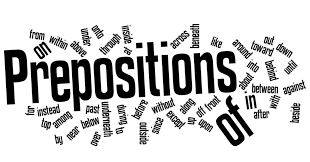
Prepositional phrases can also function as adverbs. For example, in the sentence "I put the gift under the tree," the prepositional phrase "under the tree" is telling us where the speaker put the gift.
A preposition is a short word that is employed in sentences to show the relationship nouns, pronouns or phrases have with other parts within the respective sentences. Prepositions are normally found positioned in the latter part of the sentence, but before a noun or pronoun.
A preposition is defined as “a word that connects a noun, a noun phrase, or a pronoun to another word, esp. to a verb, another noun, or an adjective”, according to the Cambridge Dictionary. The Oxford Learner’s Dictionary says that a preposition is “a word or group of words, such as in, from, to, out of and on behalf of, used before a noun or pronoun to show place, position, time or method.”
The Collins Dictionary defines a preposition as “a word such as ‘by’, ‘for’, ‘into’, or ‘with’ which usually has a noun group as its object.” The Merriam Webster Dictionary provides a slightly different definition. According to it, a preposition is defined as “a function word that typically combines with a noun phrase to form a phrase which usually expresses a modification or predication.”
Prepositions are seen to show some key characteristics and perform some vital functions when used in sentences. Let us look at the various uses of prepositions in English.
Based on the different uses and functions of prepositions, they can be divided into four main types. They are as follows:
For example:
For example:
For example:
For example:
For example:
For example:
To know how exactly prepositions can be used in sentences, check out the following sentences.
Given below is an extensive list of prepositions that you can make use of in your daily communication.
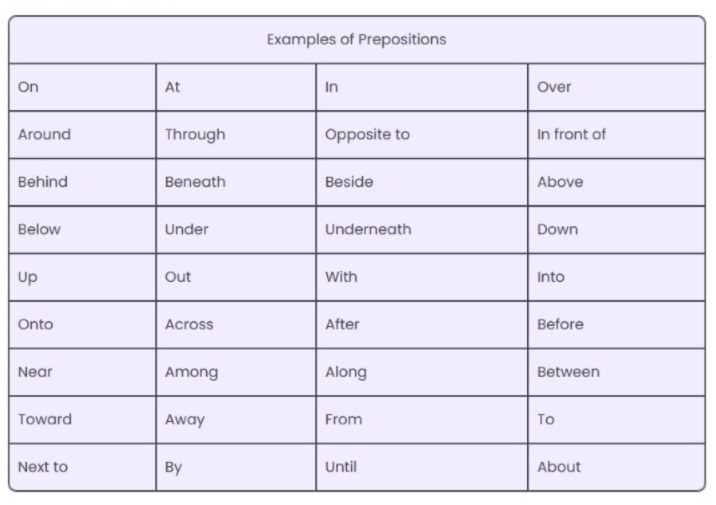
With the huge number of prepositions in the English language, it almost seems impossible to have no confusion at all. Here is a list of prepositions that cause confusion among the users of the language.
These three prepositions can be used to depict both time and position. Take a look at the table below to have a better understanding of how it works.
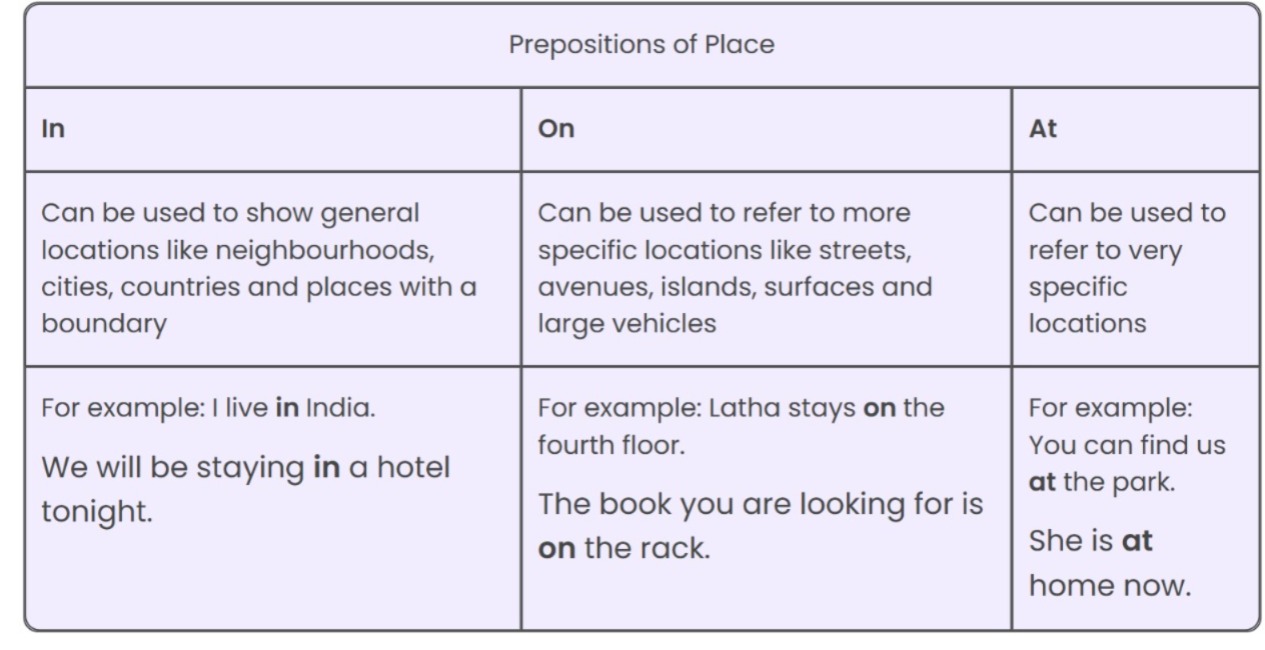
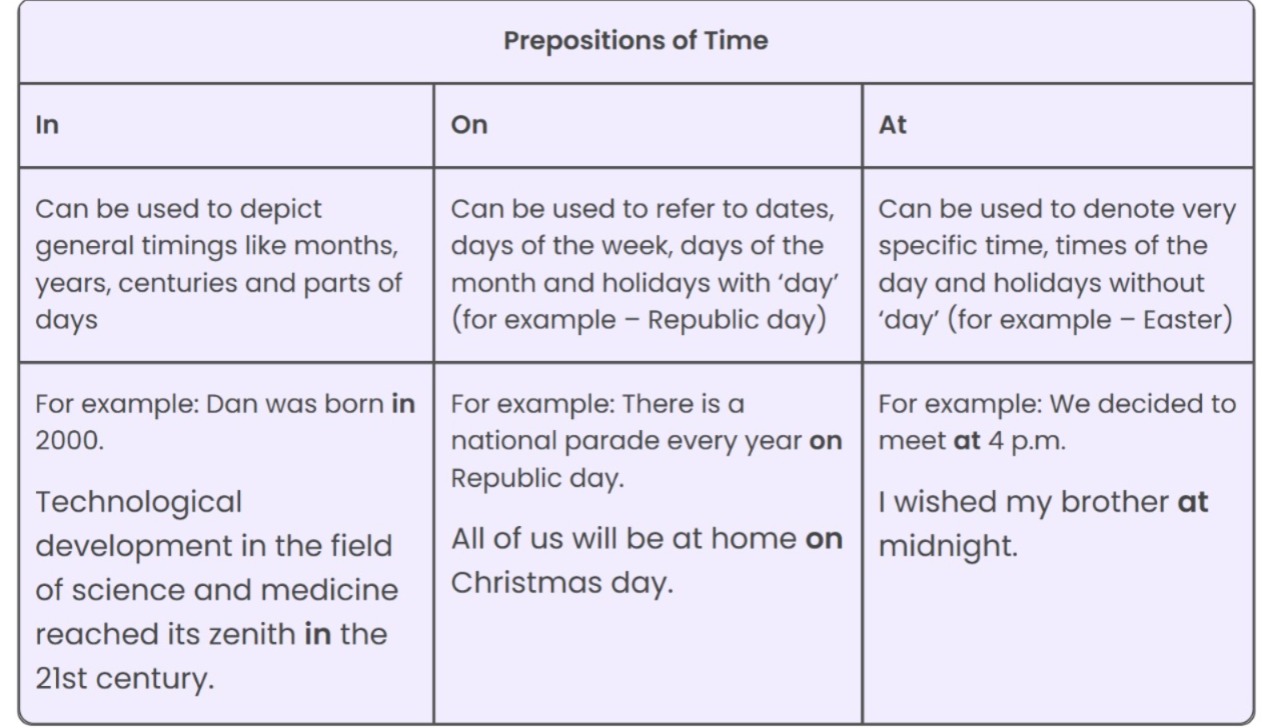
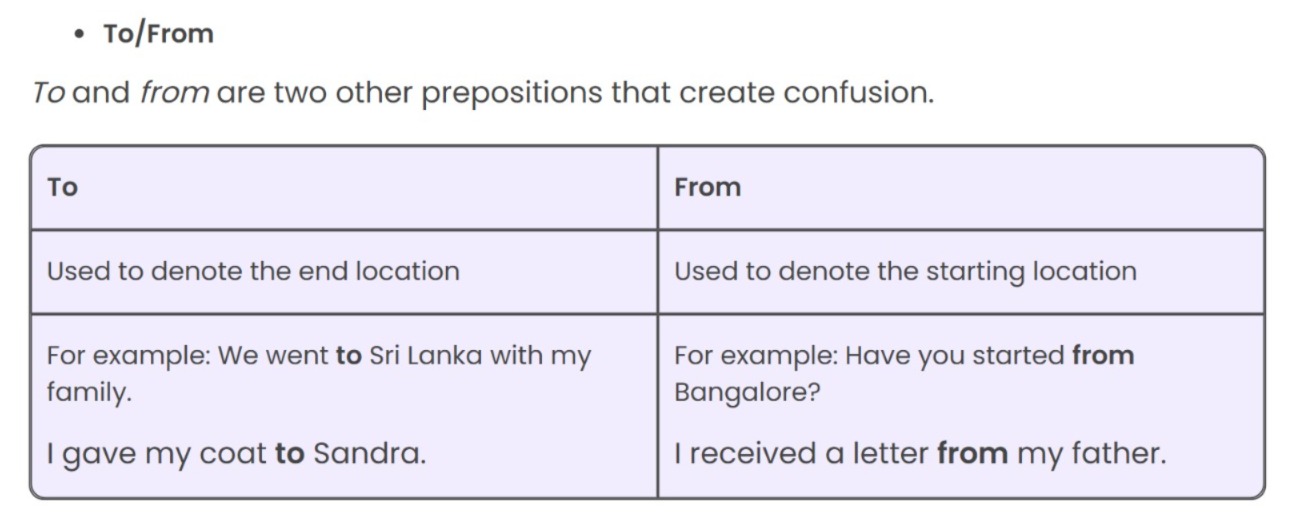
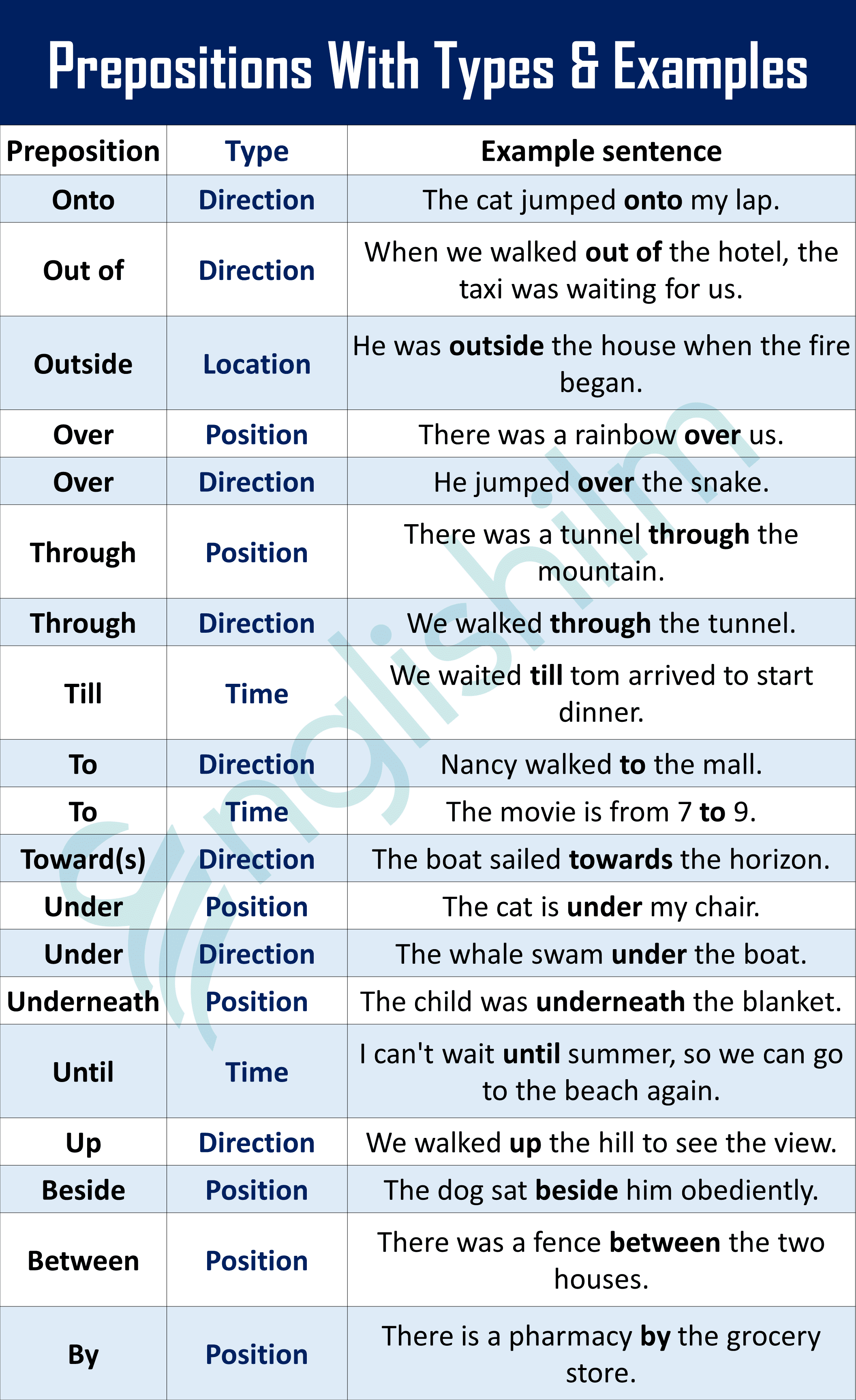
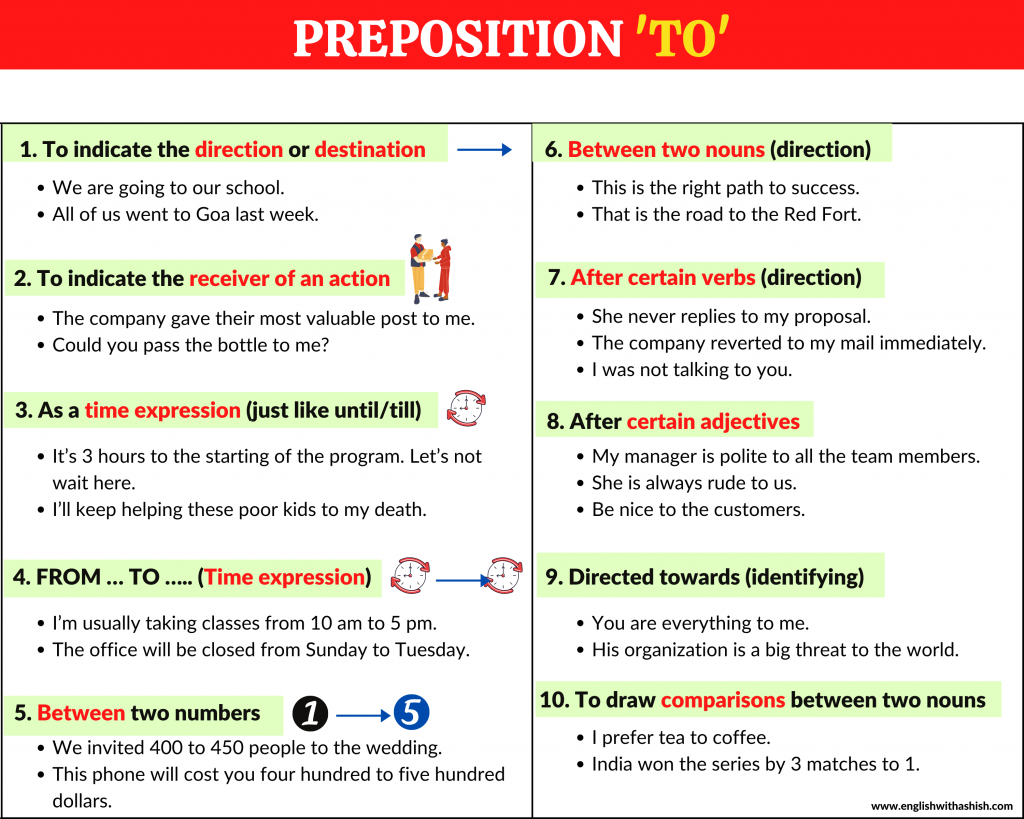
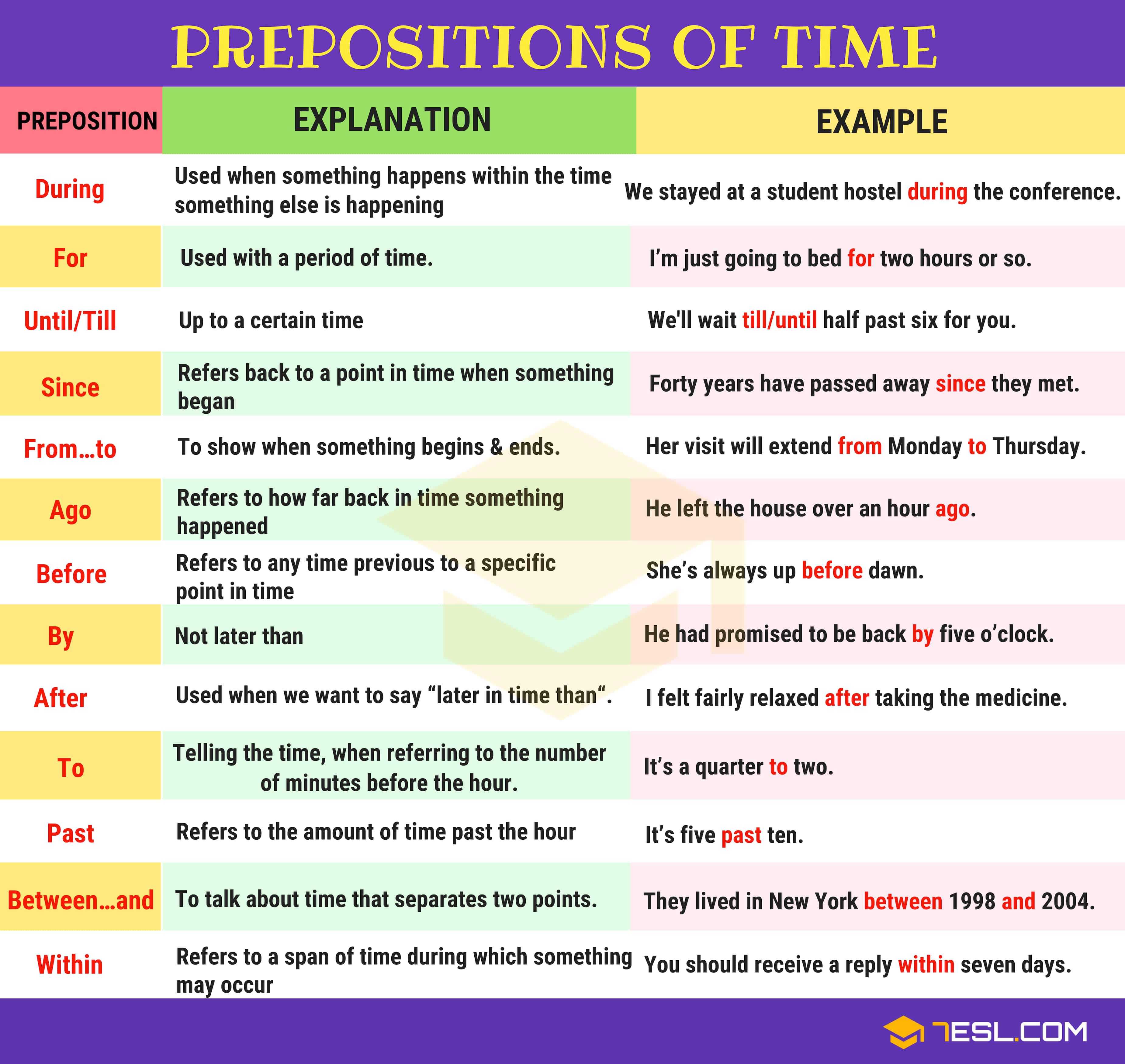
.png)